
 Copyright © Michael Richmond.
This work is licensed under a Creative Commons License.
Copyright © Michael Richmond.
This work is licensed under a Creative Commons License.
Astronomers started to investigate portions of the electromagnetic spectrum outside the optical in the 1930s. Advances in radar and rocket technology during World War II gave this new research a big push, and it has continued to grow ever since.
Note that the optical region is just a teeny, tiny portion of the entire electromagnetic spectrum:
Wavelength (m) Frequency (Hz) Energy (J)
-------------------------------------------------------------------------------
-1 9 -24
Radio > 1 x 10 < 3 x 10 < 2 x 10
-3 -1 9 11 -24 -22
Microwave 1 x 10 - 1 x 10 3 x 10 - 3 x 10 2 x 10 - 2 x 10
-7 -3 11 14 -22 -19
Infrared 7 x 10 - 1 x 10 3 x 10 - 4 x 10 2 x 10 - 3 x 10
-7 -7 14 14 -19 -19
Optical 4 x 10 - 7 x 10 4 x 10 - 8 x 10 3 x 10 - 5 x 10
-8 -7 14 16 -19 -17
UV 1 x 10 - 4 x 10 8 x 10 - 3 x 10 5 x 10 - 2 x 10
-11 -8 16 19 -17 -14
X-ray 1 x 10 - 1 x 10 3 x 10 - 3 x 10 2 x 10 - 2 x 10
-11 19 -14
Gamma-ray < 1 x 10 > 3 x 10 > 2 x 10
-------------------------------------------------------------------------------
In musical terms, the optical region corresponds to a single key on the keyboard of light:

Let's look at some representative telescopes for these other regions of the spectrum. Remember that the primary job of all telescopes is to gather light; if possible, it's good to focus the light, too.
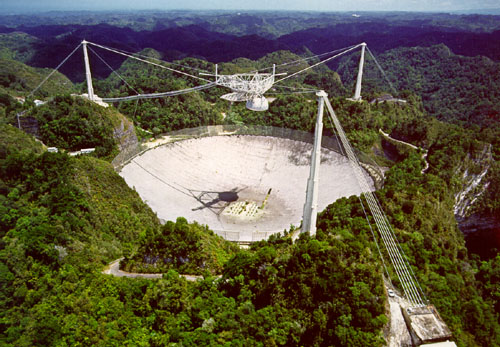
Its primary mirror, made of wire mesh, reflects light upwards to the secondary and detectors, which hang high above:

Now, despite its huge size, the Arecibo telescope can't take particularly sharp pictures of celestial objects. Astronomers describe the amount of fine detail visible in an image by the term resolution. Here's a low-resolution version of an image:
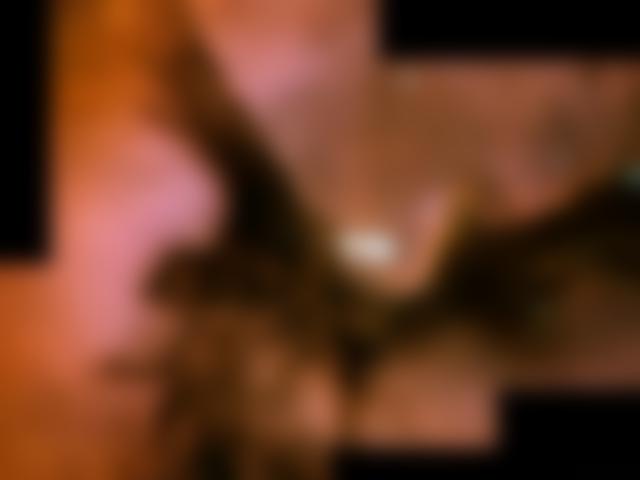
and here's a high-resolution version of the same image:
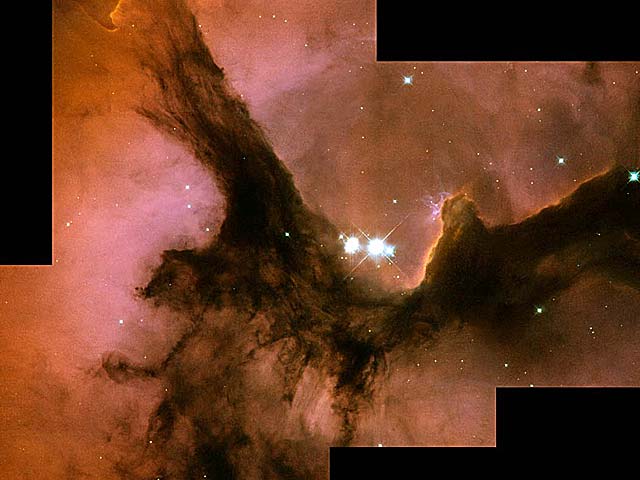
The best theoretical resolution of a telescope depends on its diameter and on the wavelength of the light it focuses. Starting once again with the general formula for the diffraction limit to resolution ....


This equation provides an estimate of the angular size of the smallest features a telescope can distinguish, expressed in degrees.
Even though the diameter of the Arecibo telescope is much larger than that of, say, the HST optical telescope, the wavelength of its light is much, much, MUCH longer. As a result, its resolution is much worse (i.e. the fraction above is much larger), and its pictures are blurry.
Q: For the HST optical telescope,
wavelength lambda = 500 nm
diameter D = 2.4 m
What is the diffraction limit for HST, in degrees?
Q: For the Arecibo radio telescope,
wavelength lambda = 21 cm
diameter D = 305 m
What is the diffraction limit for Arecibo, in degrees?
But there is a way for radio telescopes to take sharp pictures ....
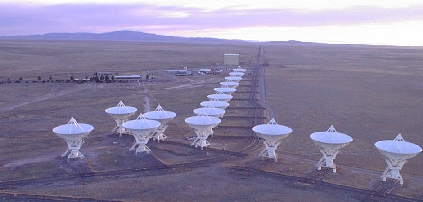
If one properly combines the signals from the individual dishes, one can achieve the same resolution as a single enormous telescope with the same diameter as the entire array.
Q: For the VLA instrument
wavelength lambda = 6 cm
diameter D = 35 km
What is the diffraction limit for the VLA, in degrees?
Radio interferometers can achieve (or surpass) the resolution of optical telescopes, as this image shows (green is optical, blue is radio):

Does this mean that the VLA is "better" than the single giant Arecibo dish? Well, it does provide much sharper images, but let's compare the amount of the light gathered by each instrument:
For Arecibo:
diameter D = 305 m
radius R = 152 m
area pi*R*R = 72,580 sq.m.
For the VLA
diameter D = 25 m for one dish
radius R = 12.5 m for one dish
area pi*R*R = 490 sq.m for one dish
total area = 13,250 sq.m. for all 27 dishes
Q: Which telescope collects more radio waves?
The near-infrared region is similar to the optical in many ways. One can use telescopes much like optical telescopes -- with mirrors made of glass -- but one does need to switch to IR-sensitive detectors. The big problem is that the Earth's atmosphere blocks most of the infrared radiation ...
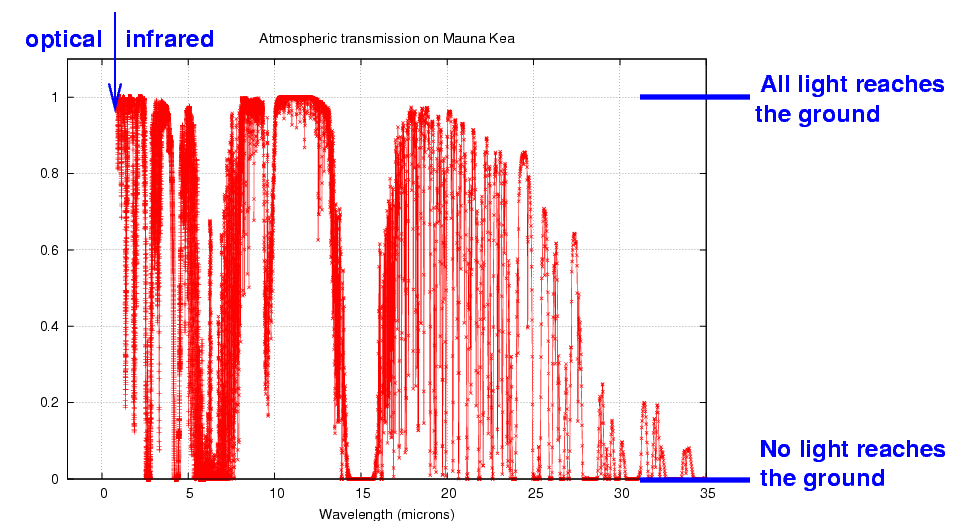
... so, in order to get a clear view, one must climb above most of the atmosphere.
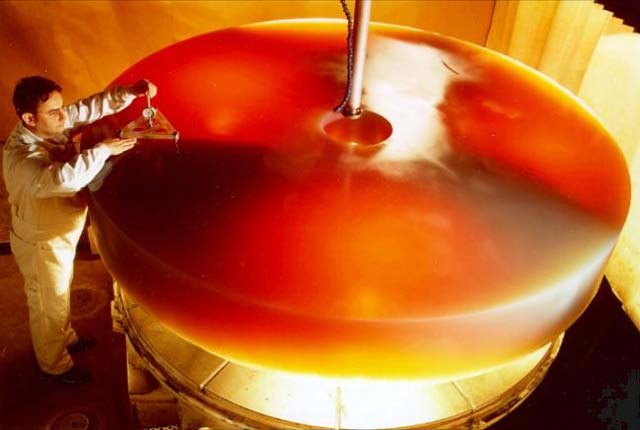
rides in a 747 to avoid most of the Earth's atmosphere:
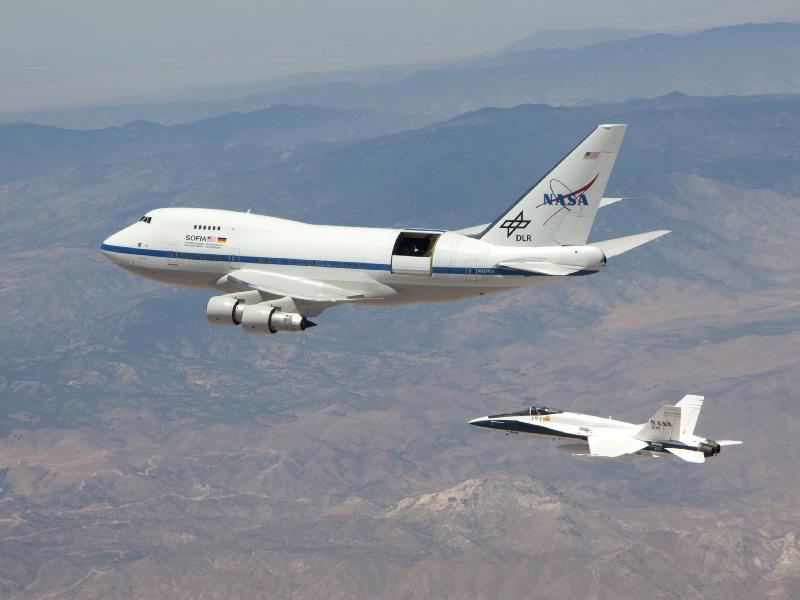
The SOFIA data are processed using tools developed here at RIT before being distributed to scientists around the world.
Spitzer's instruments collect light over a wide range of wavelengths -- from 3 to 180 micrometers. Infrared light emphasizes features due to warm dust, like the disk of material in the Sombrero Galaxy:
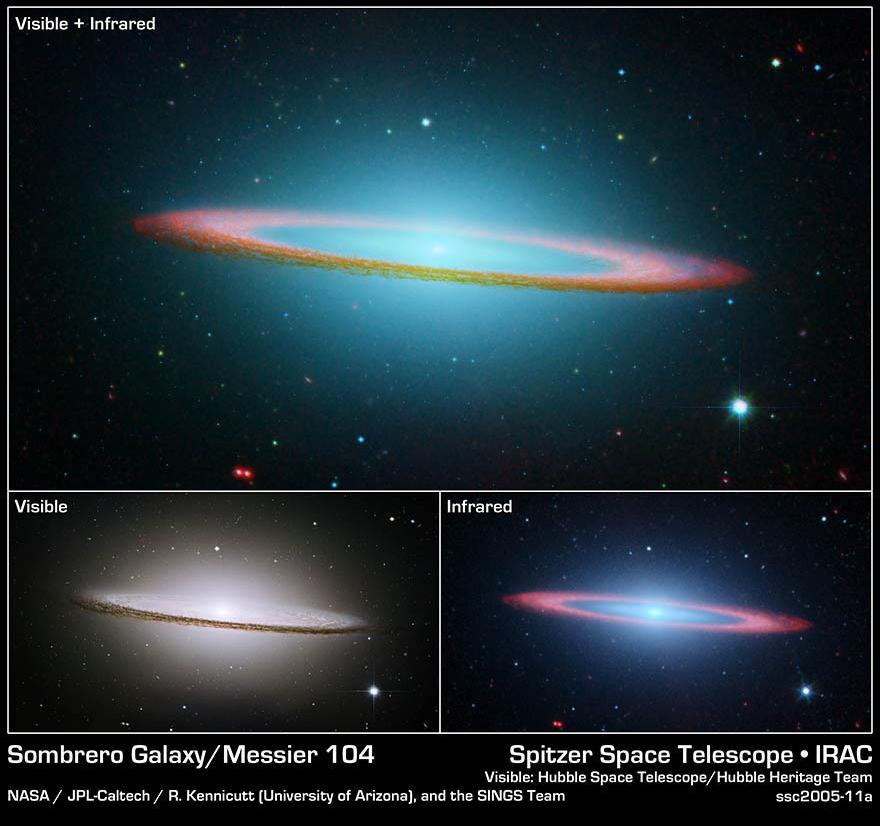
X-rays are blocked completely by the Earth's atmosphere (and a good thing, too), so one must place X-ray telescopes in orbit. Another problem with X-rays is that they penetrate ordinary matter. That means that they tend to go through mirrors instead of bouncing off them. The only way to focus X-rays is to design a telescope so that the incoming light always grazes the mirrors at a small angle.


The Chandra mirrors were aligned right here in Rochester, by Kodak.
X-rays are produced by very energetic processes, which usually require high temperatures. Compare views of the Orion Nebula, as seen by the Chandra Observatory (X-rays), HST (optical), and VISTA (infrared).
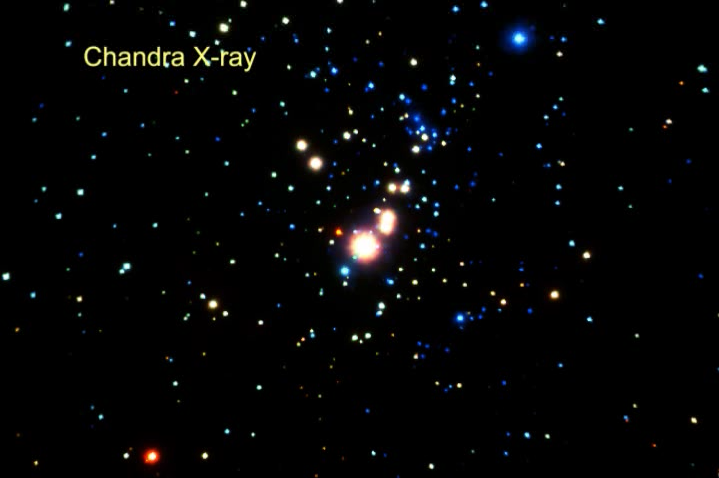
Gamma rays are even more energetic than X-rays, and they, too, are blocked by the Earth's atmosphere. The conventional way to observe them is to place a telescope in orbit ... but it turns out that one can observe them indirectly from the ground, too.

It detected thousands of gamma ray bursts, but was only able to indicate the location of each one to about 5 degrees.
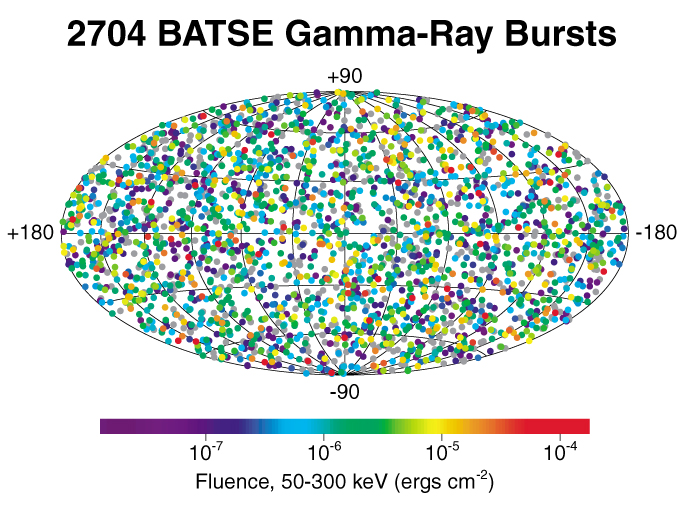
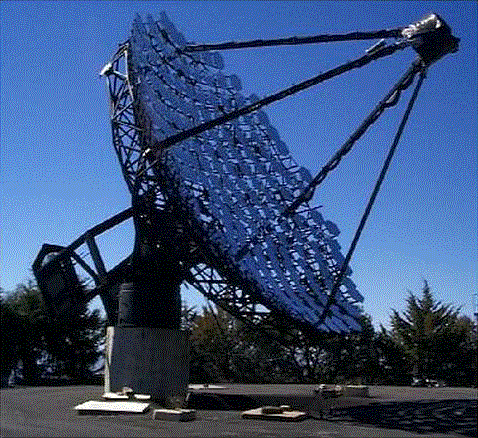
Even though the gamma rays themselves don't make it to the ground, remnants of their violent collisions with air molecules do.
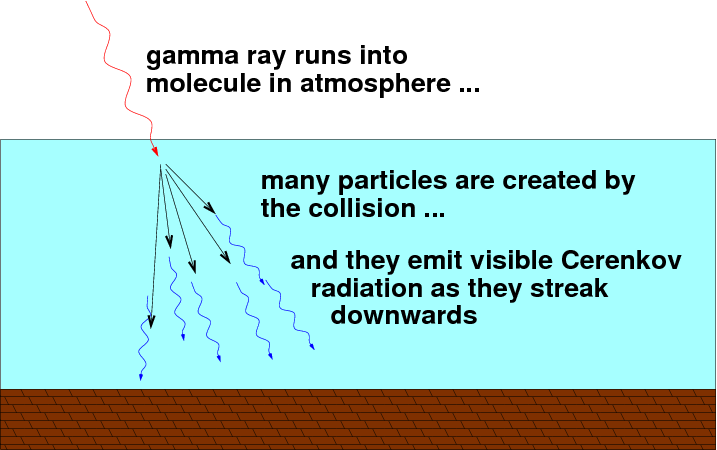
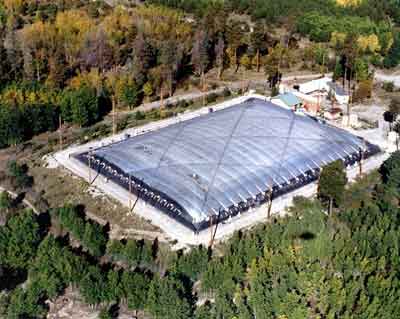
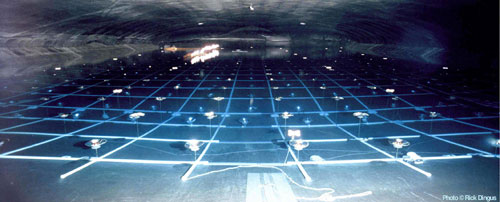
It detects the particles (not the photons) created by the collision of a gamma ray with the upper atmosphere.
Neutrinos are ghostly particles which almost never interact with matter. They can (and do) pass through an entire planet untouched. Every second, over ten trillion neutrinos produced in the core of the sun zip through your body!
So, how can one detect these neutrinos? One needs to put a big chunk o' matter in their path, monitor the matter very carefully ... and be prepared to wait patiently.


Here's the record of an actual event (muon, not neutrino) recorded by Ice Cube (click on the figure to watch a short animation).
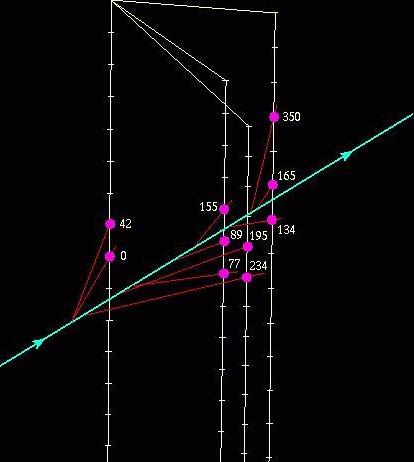
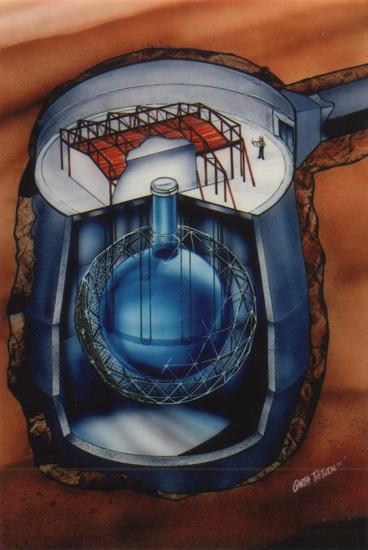
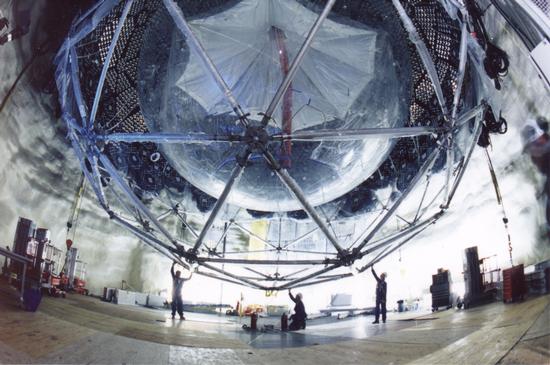
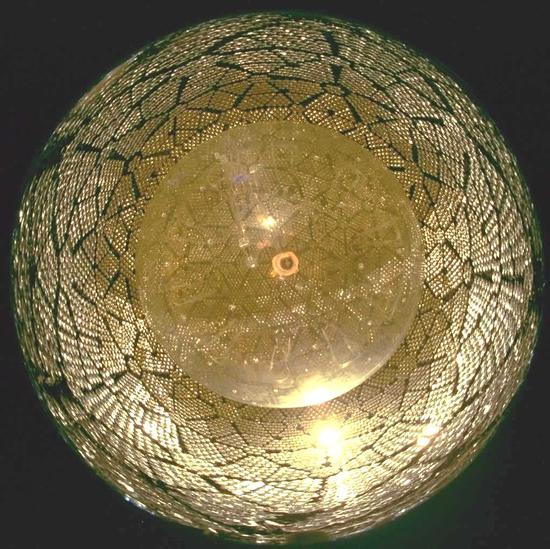
Scientists watch for simultaneous detections of flashes by many tubes all at once. A real neutrino event will appear as a ring on the side of the sphere opposite the place the neutrino entered:
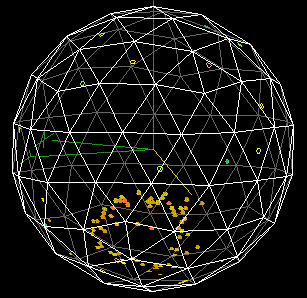
The Genesis Space Mission sent a spacecraft far from the Earth's magnetic field to collect particles of the solar wind. The basic idea was simple: expose plates of pure metal
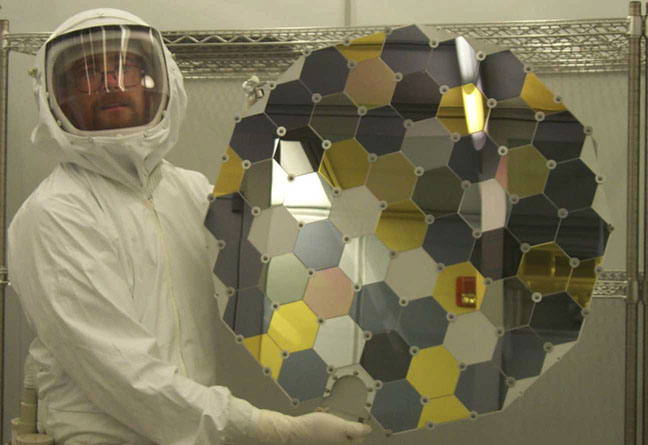
to the Sun, and let solar wind particles smash into them and stick.
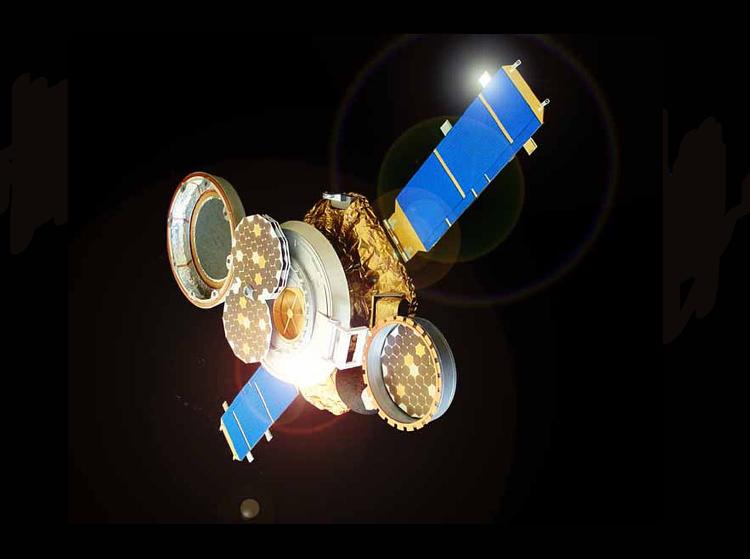
Some scientists are especially interested in the number and type of oxygen atoms in the solar wind. Even though the Genesis spacecraft was designed to spend over two years collecting particles, they realized that it might not be long enough to build up a statistically significant sample of oxygen (which is much less common in the solar wind than hydrogen or helium). Therefore, they designed one special collector which could concentrate particles, putting many more than usual into a small spot on one collector. You can see this collector at the center of the spacecraft:
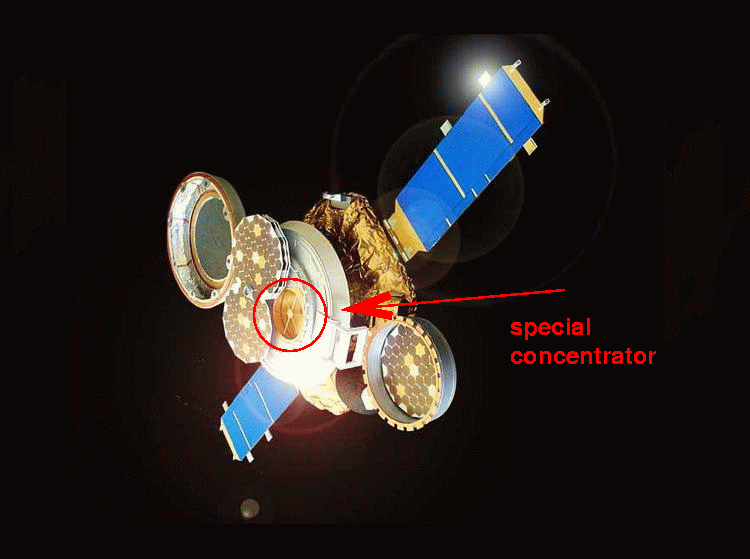
This concentrator is just a telescope -- but it uses electric fields (instead of polished glass) to reflect charged particles (instead of light rays). Here's a closeup view of it:
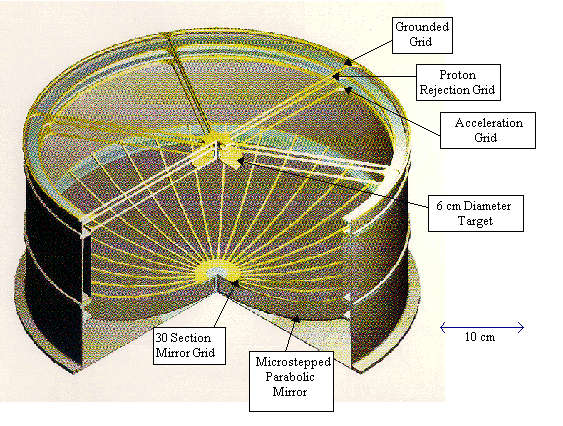
When active, the back surface of the collector, which is shaped like a parabola, is given a large positive electric charge:
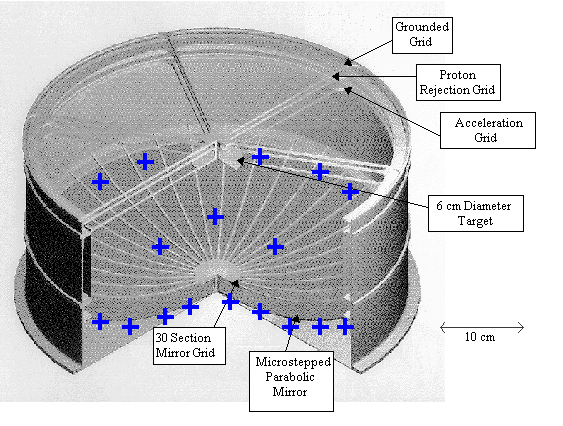
Here's a side view:
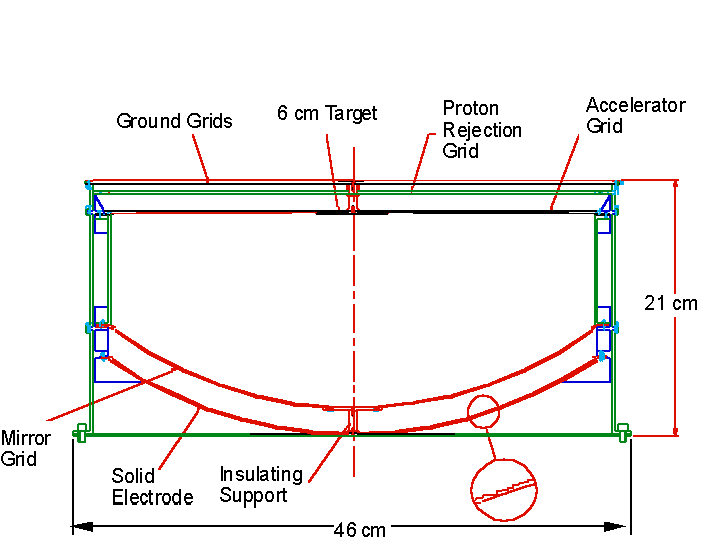
If we apply a positive charge to the "solid electrode" at the base of the concentrator, then a positive ion which flies into the concentrator will "reflect" off that positive charge and end up on the target:

 Copyright © Michael Richmond.
This work is licensed under a Creative Commons License.
Copyright © Michael Richmond.
This work is licensed under a Creative Commons License.